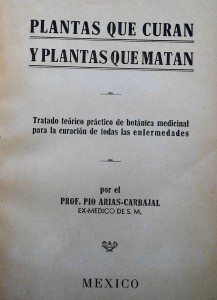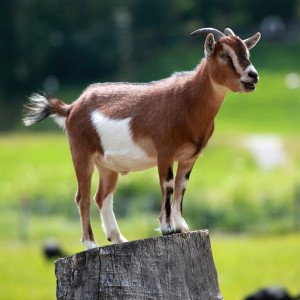This post is part of an ongoing series featuring items recently cataloged from the Julio Mario Santo Domingo Collection.
Plantas que curan y plantas que matan written in Spanish by Arias Carbajal certainly makes a splashy impression with its pulpy cover. The title translates to “plants that cure and plants that kill” and includes both theoretical and practical information regarding medical botany for curing various diseases. In one section I discovered hierba de los gatos or catnip.  The text counsels that it can be used for nerves, headache, suppression of menstruation, scurvy, and people suffering from general weakness (whatever that means).
The text counsels that it can be used for nerves, headache, suppression of menstruation, scurvy, and people suffering from general weakness (whatever that means).
Since the 1700s catnip tea has been used for many mild ailments including nervous conditions, stomachaches, hives, and even the common cold. More familiar with catnip as a stimulant for actual cats I was curious if people today still use catnip for any of these ailments. I discovered that people still brew up catnip tea though there appears to be little hard scientific evidence that these problems are being cured by the catnip. During the 1960s it was apparently smoked for the euphoric effects many claimed to experience and most people agree that it can be a good insect repellent when used in an oil form. 
On the other end of the spectrum we have the very poisonous tartago or spurge. Native to southern Europe, northwest Africa, and throughout most of Asia the seeds, flowers, leaves, and roots are all poisonous and because the plant produces latex it can cause skin irritation when handled. One animal that appears to be immune to the toxin from spurge are goats who sometimes eat it. But watch out if you are going to milk your goat because the toxin can still be passed along in the goat’s milk!
Plantas que curan y plantas que matan :tratado teórico práctico de botánica medicinal para la curación de todas las enfermedades /por el Prof. Pio Arias-Carbajal, ex-medico de S.M. Mexico : [publisher not identified], [date of publication not identified] can be found at the Botany Libraries.
Thanks to Alison Harris, Santo Domingo Project Manager, Gretchen Wade, Judith Warnement, and Chris Robson of the Botany Libraries for contributing to this post.



